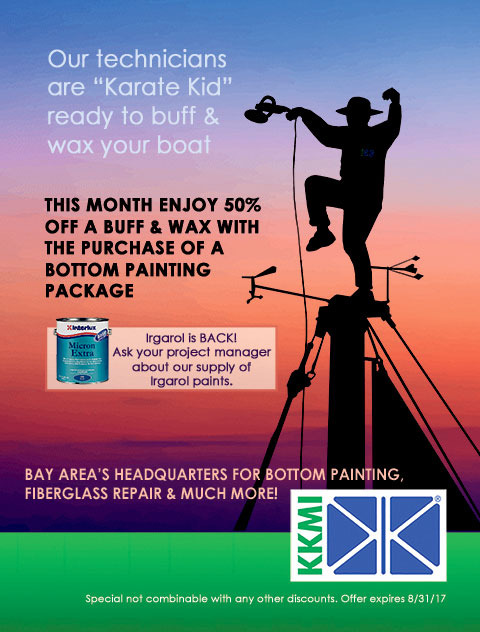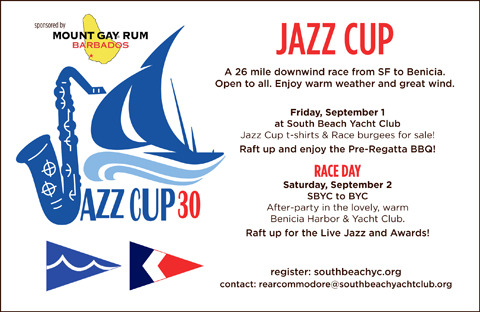
‘Matthew Turner’ Gets its Masts
The Matthew Turner is looking more and more like a ship. On Saturday — and with the ceremonial fanfare we’ve come to enjoy from Educational Tallships — the Turner’s fore and aft masts were lifted by crane, stepped and fastened into place.
The Turner’s "main mast and foremast are built, as is the tradition, in two sections each," according to Educational Tallships. "The masts are constructed of epoxy laminated Douglas fir planks that have been hand-shaped into massive tapered cylinders."
The masts — which weigh between 4,500 and 5,000 pounds — were "stepped into custom bronze fittings firmly secured to the Turner’s keel. The lower main mast is 70 feet above the waterline. The lower foremast is 50 feet above the waterline. Each mast, when fully assembled, will be 100 feet above the waterline."
As is the tradition in larger sailboats, coins were placed underneath each mast. "Sailors and shipwrights have been putting coins under the masts of ships for several thousand years," Educational Tallships said. "They’ve been found in the mast steps of ancient Roman shipwrecks. The hope, still, is the offering will bring good luck and safe passage."
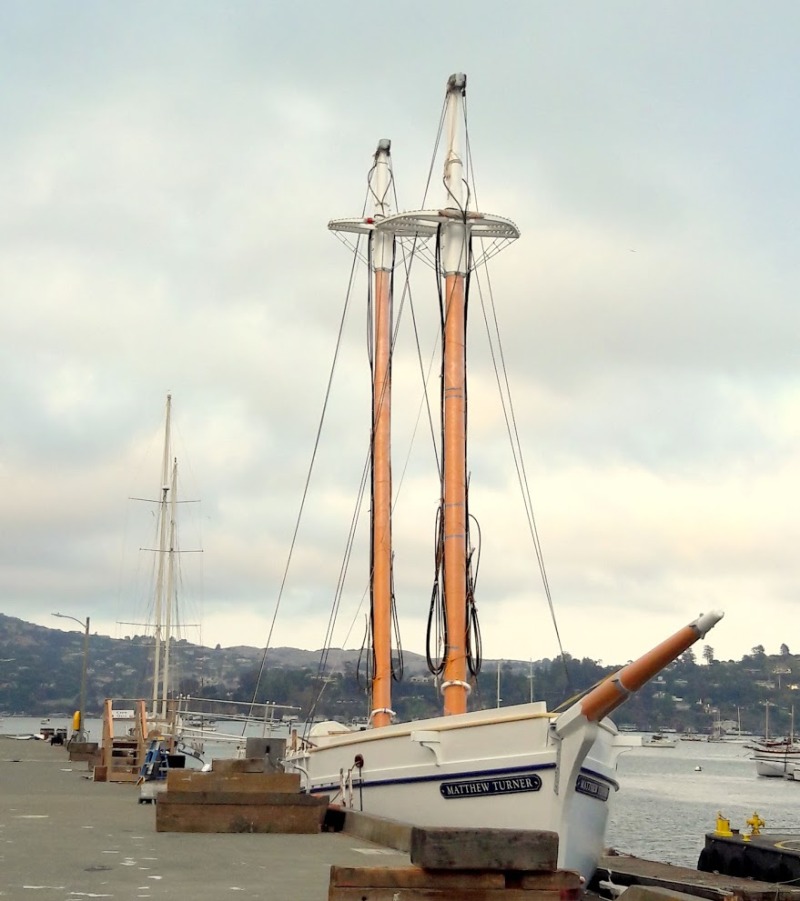
For the Turner, "each of the mast steps contains several historic and contemporary US silver dollars, gold coins and talisman objects that will be permanently held in place by the mast butts." The top sections are scheduled to be stepped in October, with the yards and booms coming in January 2018.
Tuesday Night Racing in Sausalito
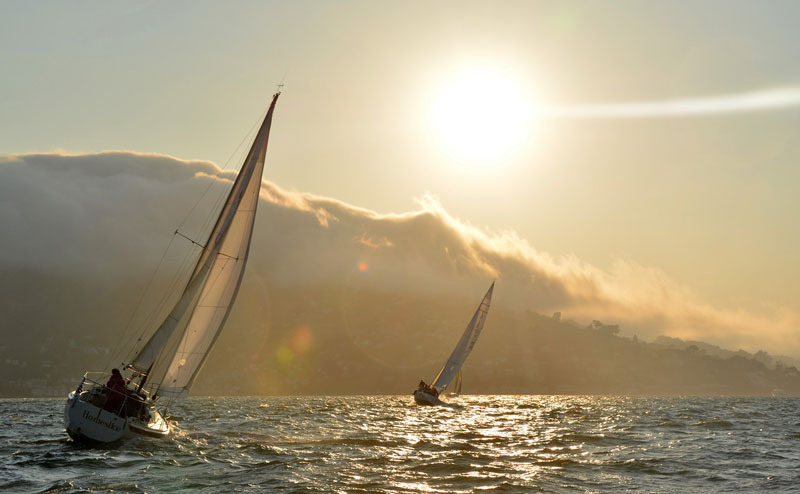
Sausalito Yacht Club’s August 8 Summer Sunset race was sailed in typical Bay Area summer conditions, with a brisk westerly wind, waning ebb and an early sunset. Eight spinnaker boats came to the line, but three suffered gear failure. Prior to the start, Steve Gordon’s J/88 Inconceivable radioed and asked to borrow a bosun’s chair so a masthead issue could be sorted out. Inconceivable started late.
During the race, Ron Anderson’s J/105 Streaker lost a sheave for the spinnaker halyard, and Nick Sands’ Sabre 402 Escapade’s headsail tack failed — a partially rolled-up genoa, which unrolled on each tack, slowed them down. Streaker went home, but Inconceivable and Escapade sailed the course, even though they were far behind. Race chair Doug Ford commented on "a good deal of Corinthian spirit on display for completing the race!"
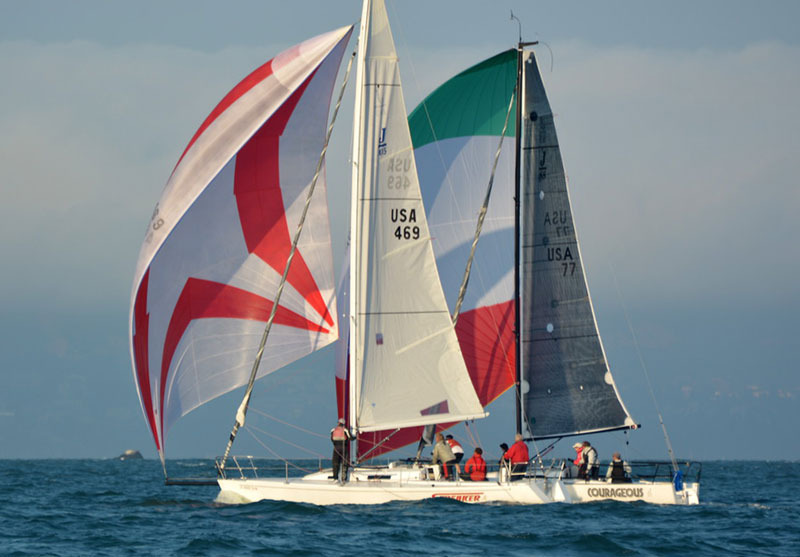
A windward/ leeward drop-mark course between Point Knox (Angel Island) and Yellow Bluff (Sausalito headlands) provided ample opportunity for boats to test less wind and ebb on the north side of the course, and more wind and ebb to the south. The usual swirling westerly wind under Yellow Bluff allowed crews to practice quick tacks when a favored lift turned into a major header. An outgoing automobile ship helped make things interesting on the second windward leg for boats seeking the ebb in the shipping channel, forcing them to tack early and providing dead air as it slowly proceeded along the south side of the course.
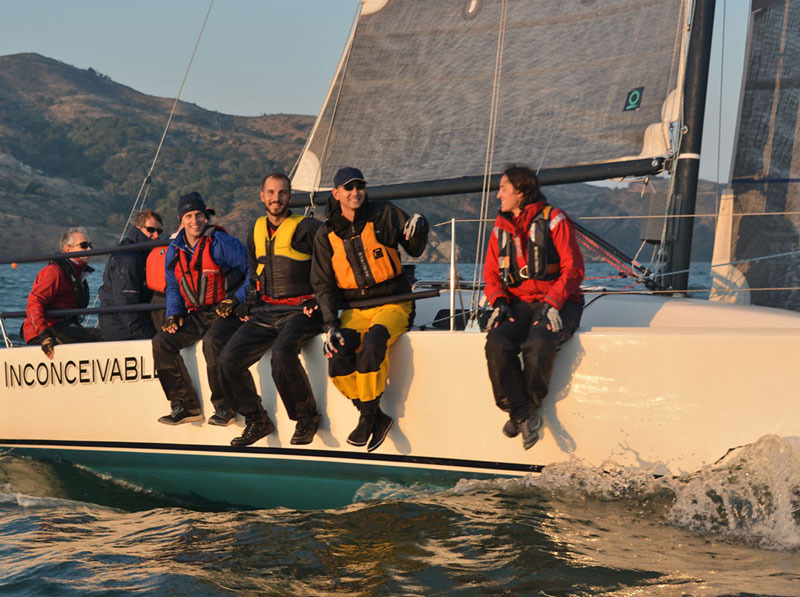
The spinnaker and large-boat white-sail divisions toured the course twice, while the small-boat non-spinnaker fleet rounded it once. Chuck Cihak’s J/105 Hazardous Waste emerged the winner in the spinnaker division, followed by Gary Panariello’s J/88 Courageous. Scott Lamson’s J/105 Mamaluc eked out an 18-second win over Bob Bloom’s J/35 Jarlen in the big-boat non-spinnaker fleet. Philip Hyndman’s Cal 29 Serendipity finished first in the small-boat non-spinnaker division.
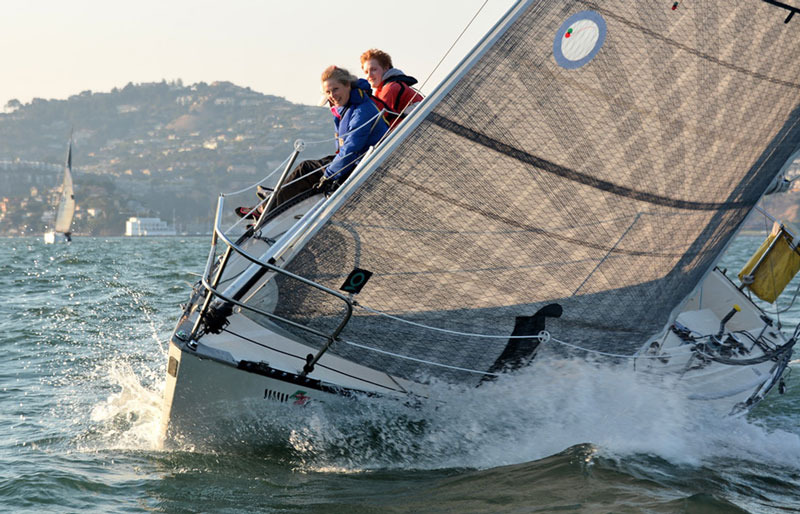
The next SYC Sunset race will be sailed tomorrow night, and the every-other-Tuesday-night series will continue through September 19. For more information, go to www.sausalitoyachtclub.org.
Ad: KKMI Ready to ‘Wax On’
The Long Way
We were walking down the dock at Schoonmaker Point Marina in Sausalito when Colin Cashmore of the Dickson 60 Avant Garde popped his head out of the fo’c’sle. He told us that he and his wife Marion had been in town just one week after a brisk sail down from Seattle. Cashmore was airing things out and letting some sun and fresh air into the boat after their sail.
.jpg)
©2017Latitude 38 Media, LLC
Turns out they’ve been out cruising, with a few breaks, for several years, and have recently been enjoying the ‘warmth’ of summer Sausalito. Previously, the couple was in Alaska and the Pacific Northwest, arriving via the Aleutian chain and North Pacific. Colin said they haven’t swum off the boat in three years as they were in high, cold latitudes.
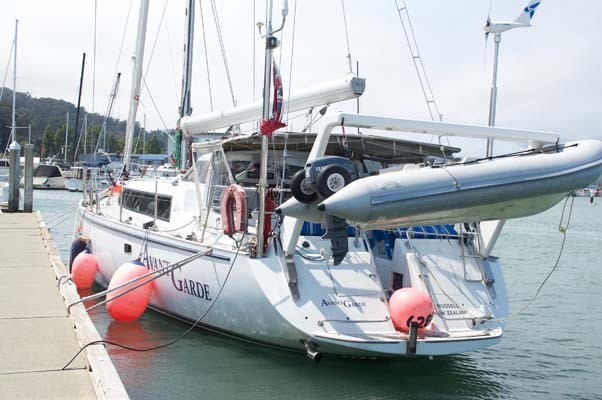
©2017Latitude 38 Media, LLC
Avant Garde is a hearty, well equipped cruising boat, but she was also shipshape and looked ready to sail on a moment’s notice. We assume that there are more than a few adventurers cruising the North Pacific. Have you met any? Let us know!
Seriously? Another Navy Collision?
We still can’t believe this morning’s New York Times headline: Rescuers Seek 10 Missing Sailors After US Navy Ship and Tanker Collide. We first thought it was a follow-up about the recent collision of the USS Fitzgerald in June, but today’s Times story involved a completely different destroyer, the apparently ‘unguided’ guided-missile destroyer John S. McCain. This is undoubtedly a tragedy for the Navy, the sailors and their families, but the accident strains belief when we consider the abundance and sophistication of collision avoidance tools available for even average sailors. AIS has become increasingly common, and is now seen as invaluable for offshore passagemakers.
The McCain was near the Straits of Malacca, the infamous maritime choke point between Malaysia and Indonesia famous for heavy commercial traffic and piracy, when it collided with an oil tanker off the coast of Singapore.
It was especially interesting to read this paragraph in the Times article: "While on operations, warships do not emit standard satellite tracking signals that other larger vessels use to avoid collision," said Euan Graham, the director of the International Security Program at the Lowy Institute in Sydney, Australia. "They don’t want other countries to know where they are going. There is a degree of stealth. So that puts the balance of responsibility on the warship to maintain watchfulness in case it’s not spotted by other vessels."
We suppose it shouldn’t come as a surprise that US Navy ships cruise around in the dark without broadcasting where they are, but it’s a complete shock that they wouldn’t know where they are relative to other ships in the area. Of more concern among cruising sailors are lightly crewed commercial ships on autopilot. But should we worry more about big, gray ships trying to sneak around after sunset? At least commercial ships will show up on your AIS.
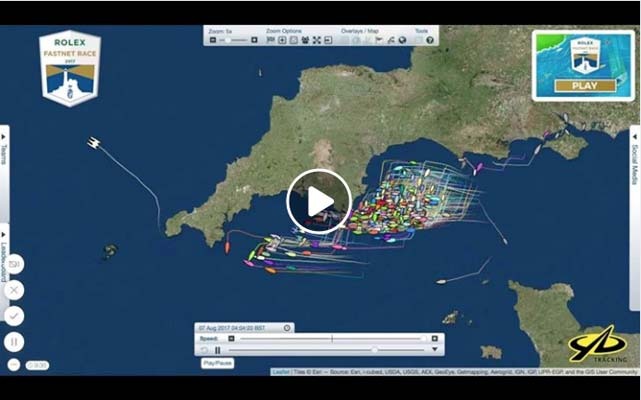
We’re hoping for the safe rescue of the 10 sailors currently missing. The US Navy — which, according to a story published Thursday by the Times, relieved two top officers and punished several other sailors over the collision of the Fitzgerald — seems to have a lot more explaining and training ahead.
And for all of us, watch your instruments but keep a good visual lookout 24 hours a day.
The 2017/2018 Clipper Race Starts
They won’t arrive on the West Coast of the US until April, but the 12 boats in the current edition of the Clipper Round the World Race started yesterday in Liverpool, England. With on board trackers, you can follow their 30,000-mile adventure from the comfort of your home. If you’re inspired by the adventure, this is one ’round-the-world race you (non-professional sailors) can join. Follow the race here.

